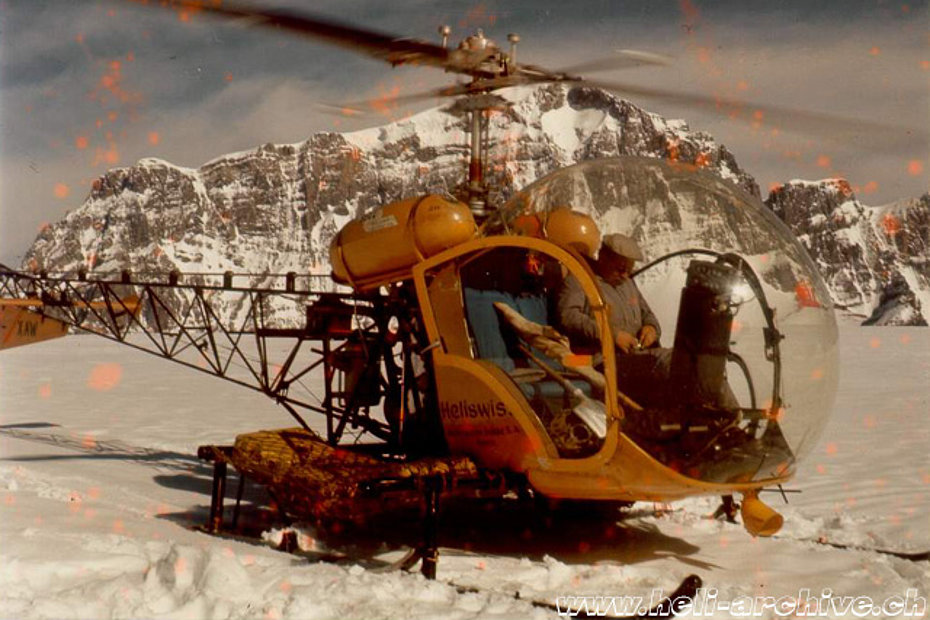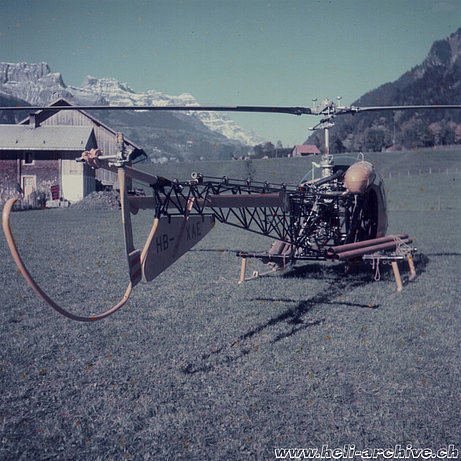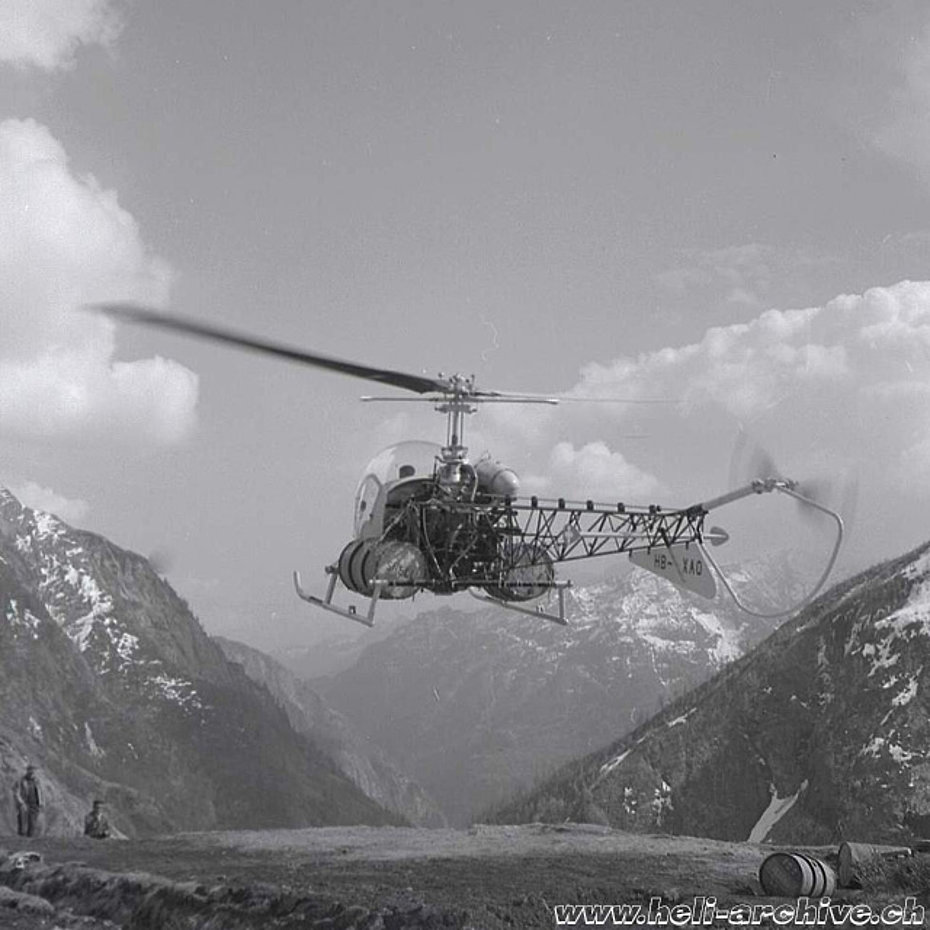
This was the first system adopted in Switzerland for transportation of goods. The helicopter was equipped with an horizontal nylon net on each side of the cabin (or with a quick attachable external cargo carrier) where it was possible to load small things, as backpacks, supplies, small tools, etc. During the flight the cargo was protected with another nylon net to prevent the risk of damaging the rotors from collisions (read about the accident happened to Leo Kunz).
This technique is today commonly used during the Winter season to transport skis when the helicopter is used to transport skiers to the mountain tops (heliskiing). The manufacturers produce different types of external containers.

In the picture number 2 the helicopter Agusta-Bell 47G2 HB-XAO is transporting two fuel drums. It is interesting to note that pilots frequently asked mechanics to remove non-essential components from the helicopter such as the left fuel tank, the battery, the alternator, the radio equipment, the doors and even the seat cushions. In this way it was possible to reduce the empty weight of the helicopter of about 30-40 kg and increase the payload.
Let’s not forget that the early helicopters, as for example the Bell 47G and G2, were used as aerial cranes at altitudes exceeding 2'500-3'000 metres, and this despite their limited engine power reserve.
Picture number 3 was taken on October 9, 1955 when the Bell 47G HB-XAE was damaged during a transportation in the Linthtal/GL. A metal tube in the horizontal net fell off during the flight and hit the tail rotor. One of the two tail rotor blades separated from the hub. The metal arc which protects the tail rotor and the tail structure were also damaged. Despite the strong vibrations pilot Leo Kunz made a successful autorotation landing.
The photograph, taken immediately after the accident, shows the damages to the helicopter.
HAB 12/2009


